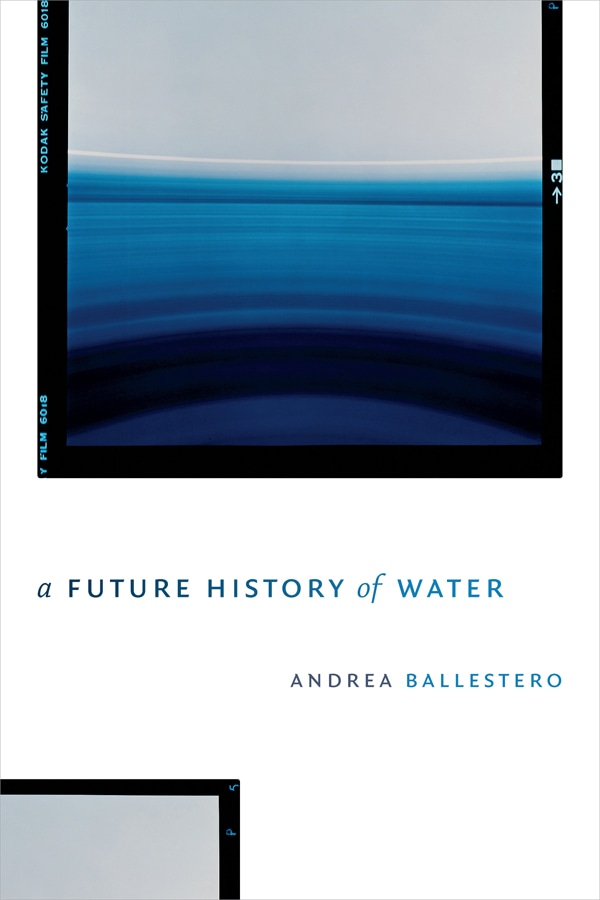Andrea Ballestero,(2019). A Future History of Water. Duke University Press.

The water bottles are empty of water, filled only with coins. That is the tragic point of this metaphor and arrival story.
I thought of this exercise while reading Andrea Ballestero’s powerful and provocative book, A Future History of Water. Early into her luminous ethnography of the work of water access, rights, and commodification in Costa Rica and Brazil, Ballestero introduces a plastic water bottle filled with coins, a rattle of protest made and used by activists at the 2006 World Water Forum in Mexico City. The water bottles are empty of water, filled only with coins. That is the tragic point of this metaphor and arrival story.
Similar to my students’ realizations after imploding their water bottles, there is very little water present throughout Ballestero’s ethnography. But unlike the plastic water bottles filled with coins, water itself is not a metaphor: this absence is critical. While many water-based studies of recent years explore pipes, dams, water-ways and shorelines, A Future History of Water implodes a different dimension by following the economic and political threads of water rights and commodification into the offices of economic regulators, legislators, activists, government officials, and consultants.
What unites them is not ideology or language or labor or location, but instead their active participation in international networks and the “imaginative work they do to create… valued distinctions between the categories of human rights and commodities”
Herein lies the tension that both enlivens and haunts the pages of Ballestero’s book: how can water be both a human right and a commodity? This question is nowhere near as simple as it may appear, but instead a riddle that cannot be undone, an entanglement that cannot be untangled. Like the collision of an empty water bottle and a handful of coins, the book shows how our perceived and constructed distinctions are never as clear, never as bounded, as we may think they are. This argument is built into the foundation of Ballestero’s fieldwork: there is no bounded site, instead the book moves between Costa Rica and Brazil, blurring the boundaries of space through multi-sites ethnography. Additionally, there is no distinct “community” or “culture,” instead her informants are “economists, lawyers, engineers, environmental scientists, philosophers, sociologists, farmers, schoolteachers” and work from various locations: “NGOs, bureaucratic offices, scientific institutions, and even their respective congresses” (4). What unites them is not ideology or language or labor or location, but instead their active participation in international networks and the “imaginative work they do to create… valued distinctions between the categories of human rights and commodities” (5).
These disparate yet united actors are involved in constructing a “future history,” which is created “not by talking about what that future looks like, but rather by acting in the present with all its constraints and limitations” (27). This lesson is a useful one, not just for ethnographic analysis, but also for survival in our current moment of COVID-devastation, prevalent right-wing populism, and ongoing environmental destruction (to name only a few crises). This is not to claim we should not dream of wide, elliptical, expansive future possibilities, but instead to say, along with these future imaginings, what does future-building look like? Ballestero answers this question for us through the work of her interlocutors, who strive towards incremental changes within the limitations and constraints of the present moment. These forms become ethnographic categories, “devices,” (“formula,” “index,” “list,” “pact”) that order and structure the book into stories of often-mundane bureaucratic work.
This is not to claim we should not dream of wide, elliptical, expansive future possibilities, but instead to say, along with these future imaginings, what does future-building look like?
These devices are assemblages of everyday practices and herein lies the wonder Ballestero promises: her informants, through their cubicle and desk work, strive to “differentiate the world that already is from the world that should be” (188). Such an engagement is one of fundamentally transforming what is possible in the future, even if these modifications are seemingly small in scope. In this way, the plastic water bottle becomes the perfect metaphor to describe the future-work of Ballestero’s interlocutors: “Inhabiting the space previously occupied by water, the coins inside the bottles insinuated that water had been transubstantiated into money, the ultimate commodity” (2). This transubstantiation is the site of wonder: “that condition where it becomes imperative to think carefully about things that were presumed totally ordinary, and for that reason self-evident” (32). This is not about “awe and acceptance,” she tells us, but instead of “curiosity and puzzlement that can bleed into dismay.”
Towards the end of the book, Ballestero suggests that wonder is an “activity, not a condition” (199). I cannot help, then, but fixate on the image of protestors shaking water bottles full of coins in Mexico City, these few moments of activity before security guards have them removed, before (relative) quiet returns to the convention center lobby. It is easy to see the wonder in this moment of transubstantiation. And yet, Ballestero reminds us that we cannot just see wonder in these performances, we must also find it in the water meter readings rendered onto excel spread sheets; the price index used to set water rates; the lists determining water’s material conditions; and the Water Pact designed to encourage care, conservation and water protection. And then, my own dismayed students, holding their own bottles of water in a college classroom in Pennsylvania. These are also moments of wonder. And of future-history making.
Dumit, Joseph. 2014. “Writing the Implosion: Teaching the World One Thing at a Time.” Cultural Anthropology 29 (2): 344–62
Photo by Daniele Levis Pelusi on Unsplash
This review is the second post of a book symposium on A Future History of Water.








